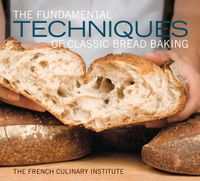Advertisement
Milk solids
Whole or Nonfat
Appears in
Packaged, highly nutritious milk solids are milk with all (or almost all) of its moisture removed and are used extensively in commercial bread making. Nonfat dry milk (NFDM) contains 36 percent protein and 51 percent carbohydrates (in the form of lactose) and minerals (such as calcium). Milk solids are used both for their nutritional content and their ability to heighten crust color. This is due, to a great extent, to the browning reaction of the protein and to the caramelization of the lactose that has not been fermented by yeast. The proteins and calcium also have a strengthening effect on the gluten. Using milk solids also seems to have a buffering effect on pH. This buffering effect helps retard fermentation; however, milk solid levels of less than 3 percent in a formula will have little effect on the final flavor of the baked bread. Milk solids for yeast doughs must be high heat treated to denature the serum protein, which exerts a weakening effect on the gluten in the dough. In breads, the use of milk solids will range from 0 to 8.2 percent. Whole milk solids must be refrigerated; nonfat dry milk is shelf stable. Recently, the popularity of nonfat dry milk has decreased due to an increase in cost, and it has been replaced by soy/whey blends, milk substitutes, and sweet whey, with an average usage of about 2 percent in any given formula.


